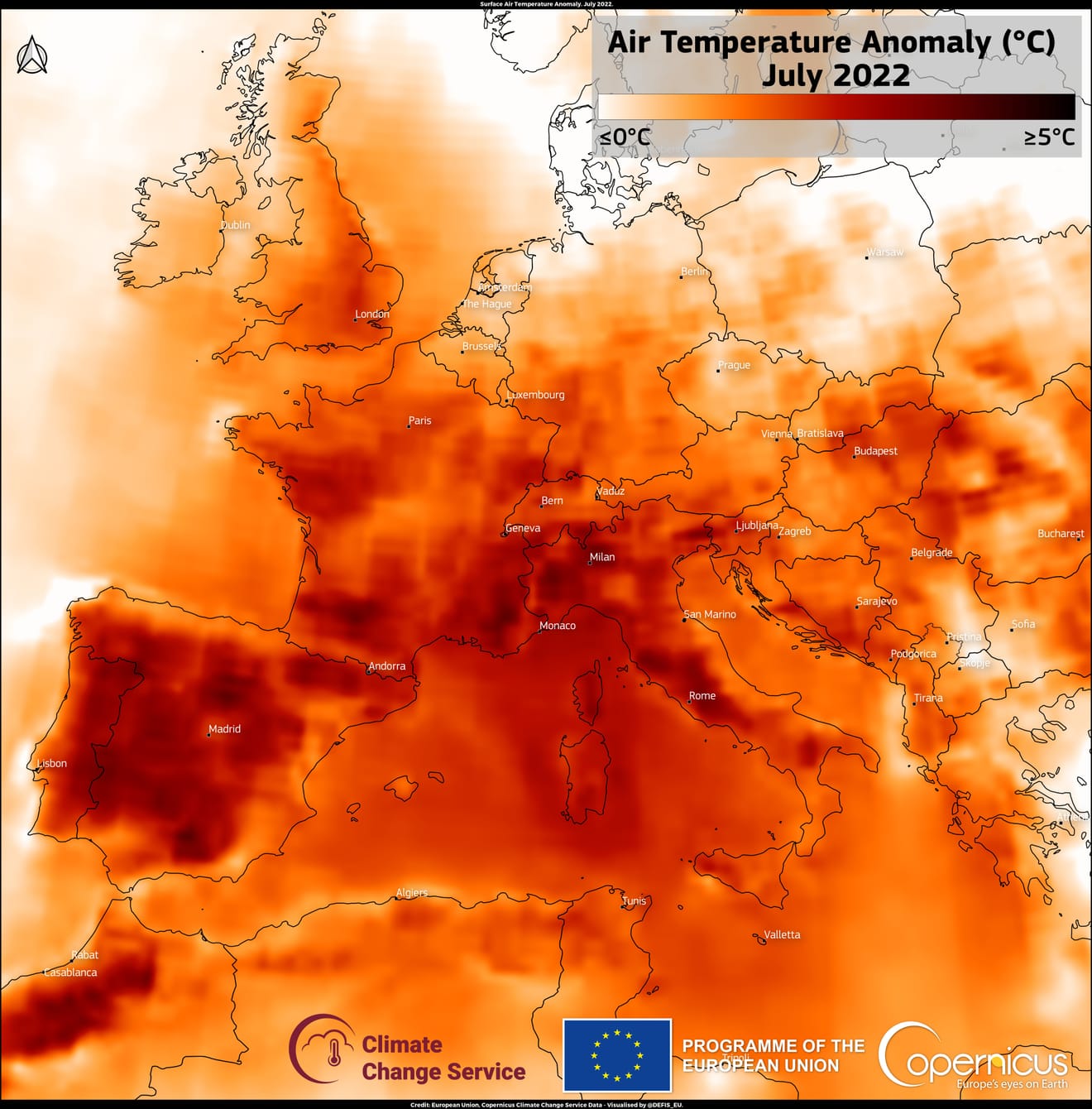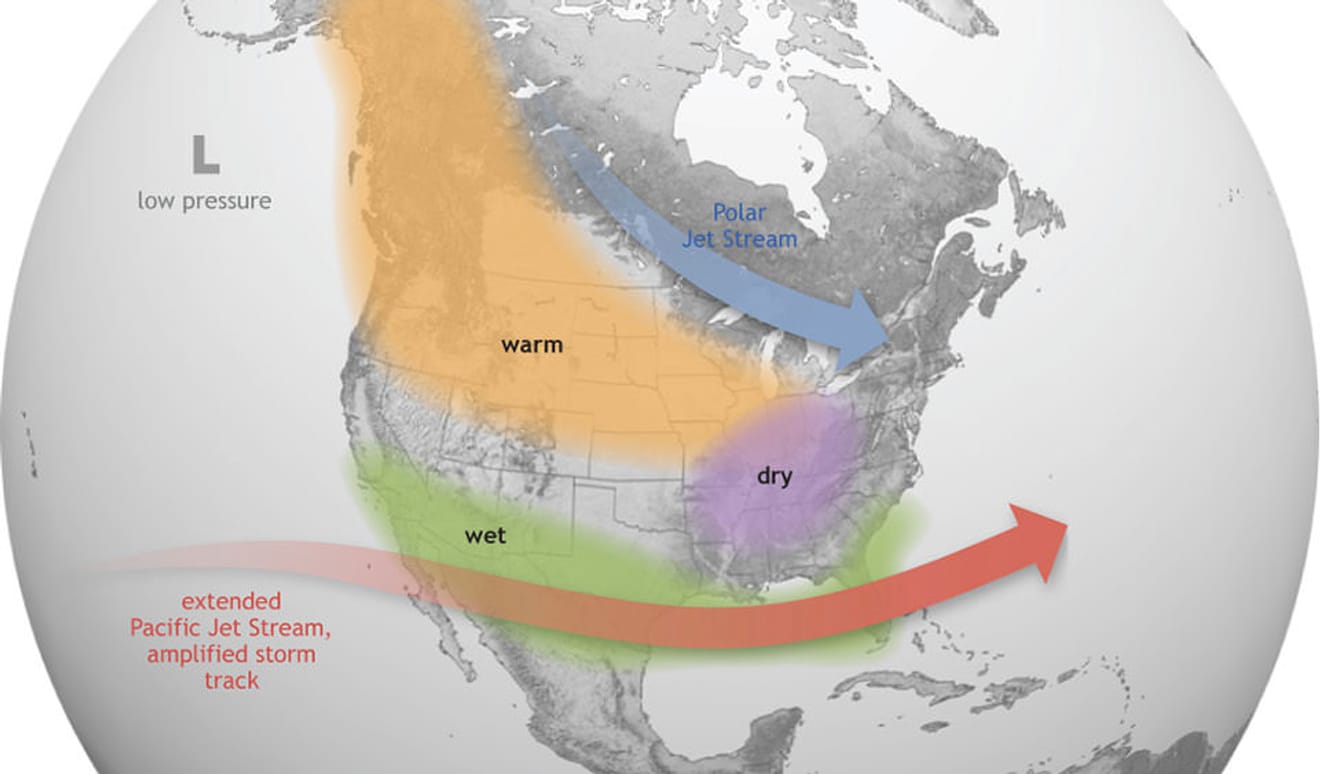Subject
- #Extreme Heat
- #Climate Crisis
- #Heatwave
- #Europe
- #Global Warming
Created: 2024-02-01
Created: 2024-02-01 08:44
A natural disaster that caused 70,000 deaths in 2003 and 60,000 deaths in 2022. It's not an earthquake, flood, or tsunami, but heatwaves. This many people have lost their lives due to heatwaves in Europe alone.
Everyone knows that the climate crisis is severe. In the past, we thought that only polar bears and other animals would die from the climate crisis, but now, we, humans, can also lose our lives due to the climate crisis.

European Union, Copernicus Sentinel-X imagery
Europe suffered from heatwaves from June to August 2022. Record-breaking heatwaves reaching 40-43℃ resulted in numerous deaths from heatstroke in various European regions, including Italy, Greece, Spain, and Germany. Experts predict that such heatwaves will continue to recur in the future.
The US National Oceanic and Atmospheric Administration (NOAA) strongly predicts that 2023 will be the hottest year since the 19th century, and experts warn that heatwaves are unavoidable in the summer of 2024. Some people might say, "Just use air conditioning if it's hot," or "It's not easy to die from heatwaves." However, simply avoiding heatwaves is not a solution; it's an evasion of the problem.
In Maui Island, Hawaii, wildfires ignited by hot air resulted in 97 deaths, and in Libya, a tropical storm caused heavy rainfall, leading to floods and the disappearance of about 10,000 people. Why are these heatwave phenomena occurring?

NOAA
First, it's due to global warming, which we are all familiar with. As the average global temperature rises, summer temperatures in Europe are also increasing. Specifically, we can mention the El Niño phenomenon. The El Niño phenomenon refers to a state where the sea surface temperature in the eastern Pacific Ocean remains higher than normal. Normally, cold water from the deep sea rises to maintain the sea temperature, but the ocean is not functioning properly, leading to a rise in sea surface temperature.
Experts predict that 2024 will be the hottest year due to the El Niño phenomenon. They anticipate that the El Niño phenomenon will continue to affect the region until the spring of 2024, and predict dry weather in Australia and parts of Asia, and a weakening of the monsoon climate in India as a result.

pixabay
The ISGLOBAL (Barcelona Institute for Global Health) in Spain and Inserm (French National Institute of Health and Medical Research) jointly conducted a study and warned that if the current trend of heatwaves continues, 120,000 people could die from heatstroke annually by 2050.
The world is no longer safe from the climate crisis. What efforts is the world making to solve the climate crisis?
The Paris Agreement on climate change, adopted in 2015 and implemented from 2021, is the first climate agreement that is legally binding on all 195 participating countries, although it has the drawback of lacking international legal force. The Paris Agreement stipulates that each country must submit revised greenhouse gas reduction targets every five years starting from 2020 and has the goal of limiting the global average temperature increase to below 1.5℃. However, as mentioned earlier, because it lacks legal binding power and countries set their own targets voluntarily, its effectiveness is limited and falls short of expectations.
The Earth in the future will be hotter than it has ever been, and humanity will suffer more damage. This means that the efforts we have made so far are insufficient to survive on the Earth in the future. The international community must establish more binding and future-oriented goals to address the climate crisis for the sake of the present and future generations.
Comments0